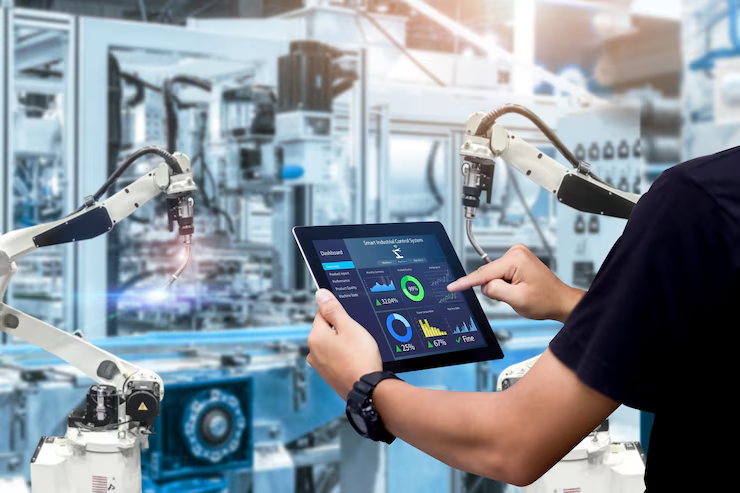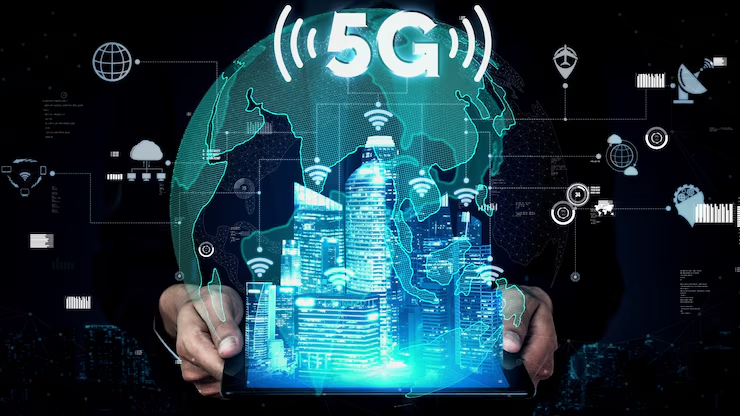Automation: Powering the Future of Work and Industry

Automation is reshaping the world. From manufacturing floors to digital customer service, automation has become a central component of modern industry and daily life. Automation It involves using technology to perform tasks with minimal human intervention, thereby improving efficiency, consistency, and speed. In the 21st century, automation is not just about machines doing mechanical work—it encompasses software, artificial intelligence (AI), robotics, and intelligent systems that make decisions and adapt to their environment.
As the global economy becomes more competitive and technology advances rapidly, automation is no longer a luxury but a necessity. This article delves into the fundamentals of automation, its various types, real-world applications, benefits and drawbacks, and how it is poised to evolve in the future.
Definition of Automation
Automation refers to the use of systems, control mechanisms, and technologies to operate processes or perform tasks with minimal human intervention. This can range from simple mechanical operations to complex decision-making algorithms.
A Brief History
-
Pre-Industrial Era: Basic mechanical tools like windmills and water wheels represented early automation.
-
Industrial Revolution (18th–19th Century): Steam-powered machines and mechanized textile mills marked a leap in industrial automation.
-
20th Century: The invention of programmable logic controllers (PLCs) and robotic arms revolutionized factory floors.
-
21st Century: Software, AI, machine learning, and IoT are transforming industries beyond manufacturing.
Types of Automation

Automation can be categorized in various ways depending on its function, technology, and scope.
A. Based on Functionality
1. Fixed Automation
Used for high-volume production where tasks remain consistent. Examples include car assembly lines and bottling plants.
2. Programmable
Ideal for batch production. Equipment can be reprogrammed for different tasks (e.g., CNC machines).
3. Flexible (Soft) Automation
Highly adaptable systems that can switch tasks quickly. Used in smart factories with AI and robotics.
B. Based on Industry or Use Case
1. Industrial Automation
Includes robotics, control systems, and data analytics for production, logistics, and safety.
2. Office/Business
Involves software tools that streamline administrative tasks like accounting, scheduling, and document management.
3. IT and Software
Uses scripting, DevOps, and CI/CD pipelines to automate IT operations and software development.
5. Robotic Process (RPA)
Uses software bots to perform repetitive business tasks such as data entry and invoice processing.
Technologies Driving Automation
Modern automation is powered by several advanced technologies:
1. Artificial Intelligence (AI)
AI enables machines to learn from data and make decisions, making more intelligent and adaptive.
2. Machine Learning (ML)
A subset of AI, ML uses algorithms that improve over time based on data patterns, widely used in predictive maintenance and customer behavior analysis.
3. Internet of Things (IoT)
Connects devices and systems, enabling real-time communication and data exchange for automated responses.
4. Robotics
Used in manufacturing, healthcare, logistics, and service industries to perform physical tasks with precision.
5. Cloud Computing
Provides scalable resources and storage that support automation systems globally.
6. Robotic Process (RPA)
Focuses on automating routine digital tasks by mimicking human interactions with software.
Applications of Automation Across Industries
Automation plays a crucial role across a wide variety of sectors.
A. Manufacturing
-
Assembly line robots
-
Automated quality control
-
Inventory management systems
B. Healthcare
-
Automated diagnostics
-
Robotic surgery
-
Medical record management
C. Finance
-
Fraud detection
-
RPA for account processing
-
Algorithmic trading
D. Retail and E-commerce
-
Chatbots and virtual assistants
-
Personalized recommendations
-
Automated warehouses (e.g., Amazon robots)
E. Agriculture
-
Precision farming with sensors and drones
-
Automated irrigation systems
-
Crop monitoring
F. Transportation and Logistics
-
Self-driving vehicles
-
Automated delivery drones
-
Smart traffic systems
G. Education
-
Automated grading systems
-
AI tutors
-
Learning management platforms
Benefits of Automation
The adoption of automation brings numerous advantages:
1. Increased Productivity
Machines can operate continuously without fatigue, leading to higher output and efficiency.
2. Cost Reduction
By reducing labor costs and errors, leads to significant long-term savings.
3. Improved Quality and Consistency
Automated systems maintain high accuracy, reducing defects and variability in products or services.
4. Enhanced Safety
Dangerous or hazardous tasks can be automated, minimizing human exposure to risk.
5. Better Decision-Making
Data-driven automation allows for real-time monitoring and quicker responses to changing conditions.
6. Customer Satisfaction
Automated systems ensure faster service, better customization, and consistent customer experiences.
Challenges and Limitations of Automation
Despite its numerous benefits, also poses challenges:
1. Job Displacement
As machines take over routine tasks, there is a risk of unemployment or job shifts, particularly in low-skill roles.
2. High Initial Investment
Automating processes often requires substantial upfront costs for equipment, software, and training.
3. System Complexity
Managing, maintaining, and integrating automated systems can be complex and require specialized knowledge.
4. Security Concerns
Automated systems, especially those connected via the internet, are vulnerable to cyberattacks.
5. Ethical and Legal Issues
Decisions made by automated systems—especially AI—raise concerns about bias, accountability, and transparency.
Automation and the Workforce
A. Changing Job Roles
While some jobs are being replaced, automation is also creating new opportunities in fields :
-
Robotics maintenance
-
AI and machine learning engineering
-
Data analysis
-
Cybersecurity
-
Process optimization
B. Reskilling and Upskilling
Governments and companies must invest in education and training to prepare the workforce for an automated future.
Future of Automation
1. Hyperautomation
A term coined by Gartner, hyperautomation involves using a combination of RPA, AI, and machine learning to automate complex processes end-to-end.
2. Autonomous Systems
Self-driving cars, drones, and AI-powered robots will become more common in daily life and business.
3. Smart Cities
Automation will power intelligent traffic control, waste management, and public safety in urban areas.
4. Collaborative Robots (Cobots)
These robots work alongside humans, sharing tasks and adapting to human behavior in real time.
5. Ethical AI Automation
Future must be fair, transparent, and accountable, requiring global standards and ethical frameworks.
Automation in Daily Life
Many people interact with automation every day, often without realizing it:
-
Smartphones: Voice assistants like Siri and Google Assistant
-
Smart homes: Thermostats, lights, and security systems
-
Banking: ATMs, online banking, and fraud alerts
-
Transportation: Ride-sharing apps and GPS systems
Case Studies
A. Tesla
Tesla’s factories use advanced robotics for vehicle assembly and battery production, coupled with AI software that automates driving.
B. Amazon
Amazon uses thousands of Kiva robots in warehouses to optimize order fulfillment, along with automated supply chain management.
C. Hospitals
Hospitals like the Mayo Clinic use automation for surgical assistance, appointment scheduling, and patient monitoring.
Conclusion
is an unstoppable force that continues to shape industries, economies, and societies. As it evolves from mechanical systems to intelligent, adaptive technologies, the implications are both exciting and complex.
To fully harness the benefits of , businesses must approach it with strategic planning, ethical consideration, and a focus on human collaboration. Governments and educational institutions must also play a role in preparing the workforce for an automated future through policies, training, and innovation incentives.
Ultimately, is not about replacing humans—it’s about amplifying human potential. By offloading repetitive, dangerous, or data-heavy tasks to machines, people can focus on creativity, problem-solving, and innovation, leading us into a more productive and dynamic future.


